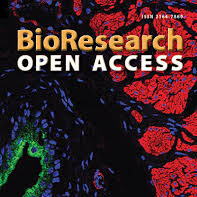The relationship between alcohol and glychohemoglobin: A biopsychosocial perspective.
By David A. Wiss

Overall, the published literature has documented that serum glucose levels have been rising in the United States, leading to an increased incidence of T2DM. Future diabetes screening using HbA1c as criteria should consider alcohol consumption, as well as gender/sex and possibly race/ethnicity. Evidence presented herein and elsewhere suggest that nonglycemic factors, including demographic predictors should be taken into consideration when screening for T2DM. After controlling for gender, ethnicity, education, BMI, and age, alcohol use is a significant negative predictor of HbA1c levels. This may lead to misleading clinical conclusions based on a falsely lowered HbA1c, which may lead to undertreatment. Personalized medicine and sustained efforts toward health equity are needed to adequately address rising rates of T2DM and may require a biopsychosocial perspective.
Subscribe for weekly insights and research exploring the link between nutrition & mental health.
Abstract
With the rising prevalence of type 2 diabetes mellitus (T2DM), there is debate regarding biological and psychosocial risk factors. While it is well established that alcohol lowers glycohemoglobin (HbA1c) levels, it is less clear whether alcohol consumption is protective of T2DM. It is also unclear how gender and ethnicity influence the utility of HbA1c screening as a tool for T2DM diagnosis, particularly in the context of alcohol use.
This cross-sectional study utilized the National Health and Nutrition Examination Survey 2013–2014 dataset and was restricted to adults 20 years and older, nonpregnant, and not on antihypertensive medication (n = 4299) to evaluate the relationship between alcohol use and HbA1c. A multilinear regression model controlled for gender, ethnicity, education level, body mass index, and age.
After controlling for covariates, both moderate (β = −0.073; p = 0.033) and heavy drinking (β = −0.167; p < 0.001) are associated with reduced HbA1c levels. Additionally, female gender is a significant negative predictor of HbA1c (β = −0.052; p = 0.024) and all ethnic groups have higher levels of HbA1c compared with non-Hispanic whites. Plausible biological mechanisms are discussed.
The clinical utility of HbA1c as a screening tool for T2DM without considering alcohol use, gender, and ethnicity may lead to diagnostic errors. Individualized approaches and focused efforts toward health equity are needed to address rising rates of T2DM.